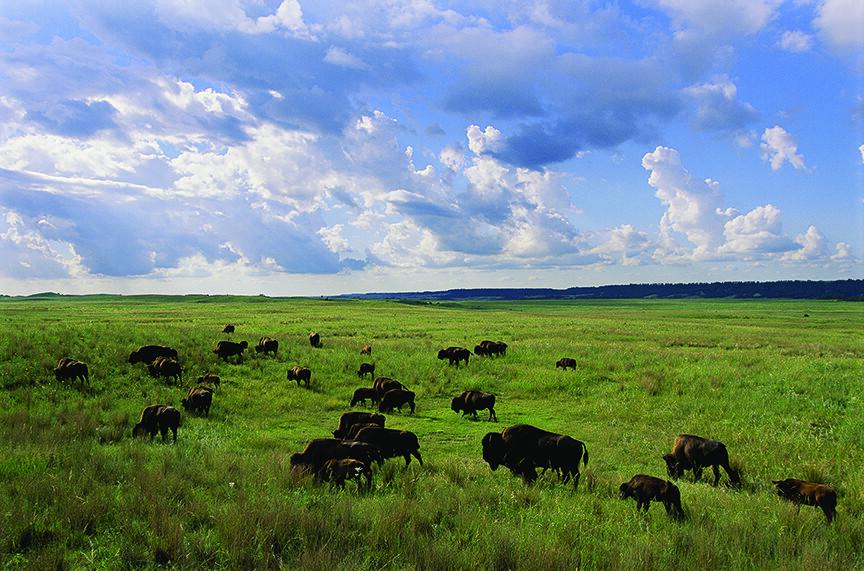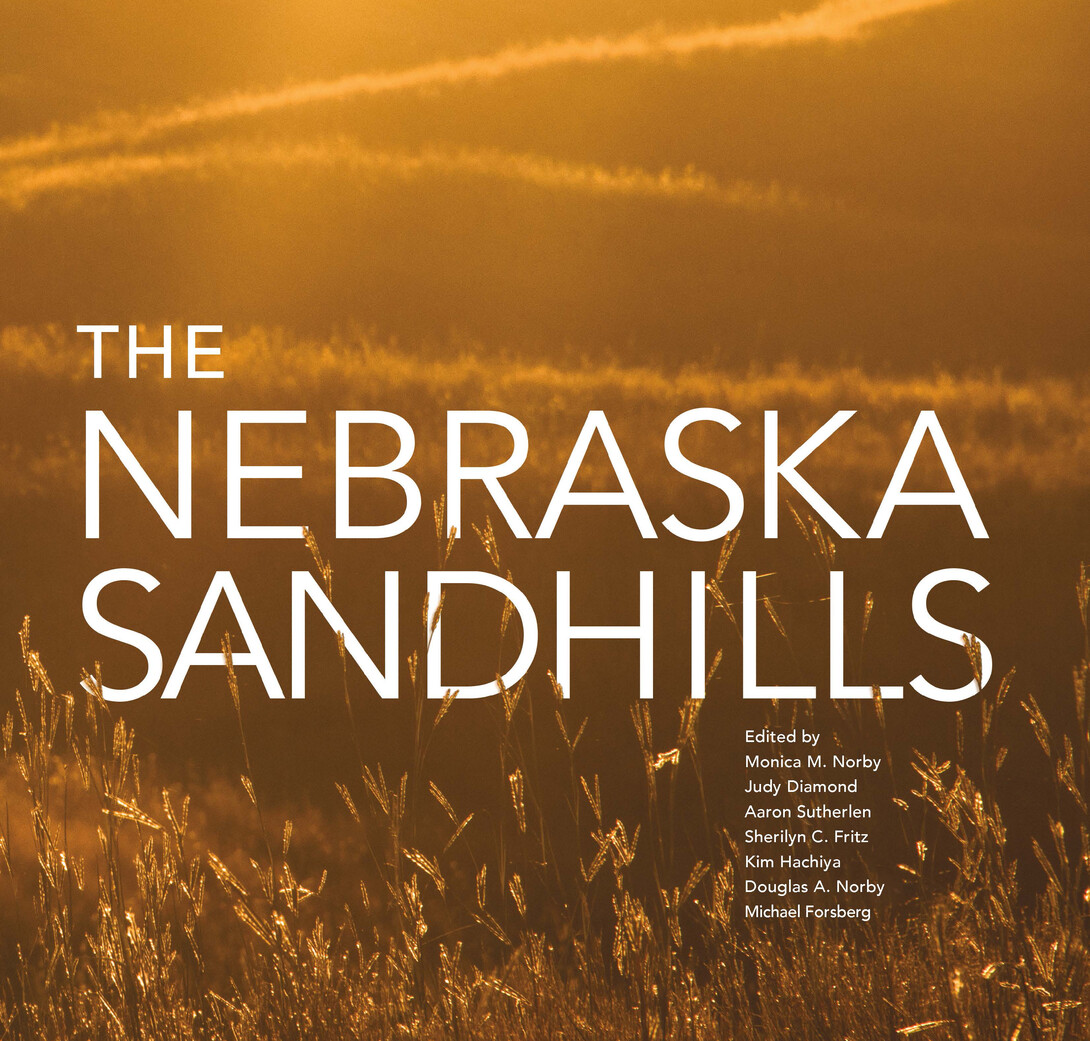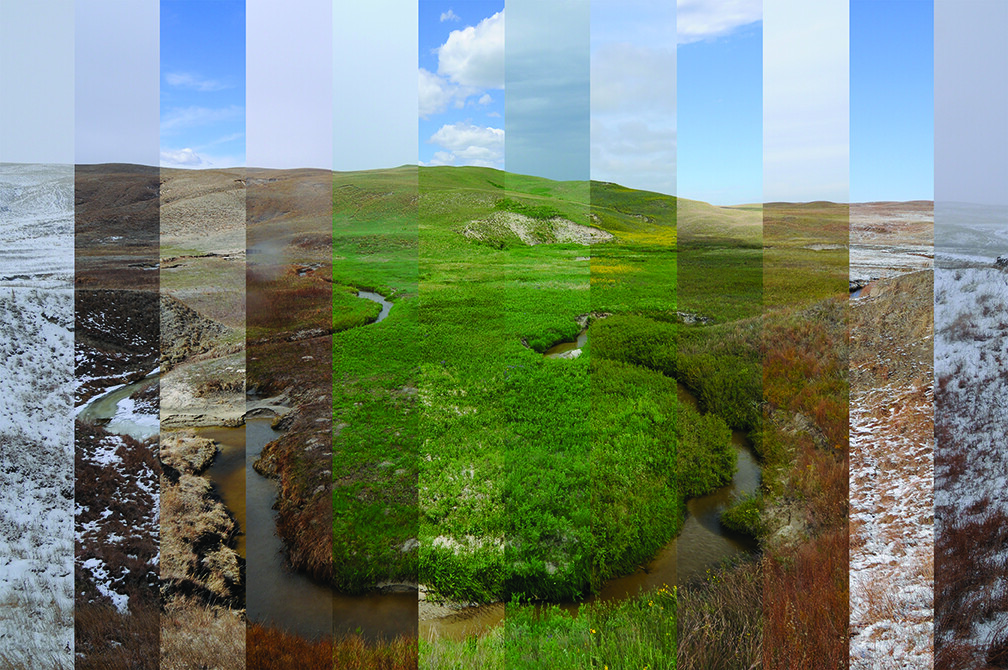
“The Nebraska Sandhills,” released this week by the University of Nebraska Press and edited by several current and former University of Nebraska–Lincoln faculty and staff members, highlights both the science and beauty of the Sandhills region.
Mike Boehm, vice chancellor of the Institute of Agriculture and Natural Resources, said it’s a celebration of the place and its people.
“We’ve got one of the last great grasslands of the world,” Boehm said. “For the people who call the Sandhills home, I think it will go a long way to pay homage to their way of life and to their neighborhood.”
“The Nebraska Sandhills” was conceived to mark the 50th anniversary of the Institute of Agriculture and Natural Resources. It includes 184 color photographs, 15 black-and-white photographs and 28 color illustrations, along with nealry 40 essays by a range of contributors from across the University of Nebraska system. It covers topics including the wildlife, plants, geology, geography, weather, history and people of the region.

Sherilyn Fritz, George Holmes Professor of Earth and atmospheric sciences and one of the book’s editors, said it highlights unique attributes that make the area special to people in so many fields.
“It’s beloved by people who live and work there, by all flavors of scientists, by writers and visual artists,” Fritz said. “We wanted to honor the many groups of people who have some living connection to that special region.”
Kim Hachiya, retired communications specialist for the University of Nebraska–Lincoln and one of the book’s editors, said some people have misconceptions about the Sandhills, and “The Nebraska Sandhills” dispels those notions.
“A lot of people think the Sandhills are going to look like the Sahara and they’re shocked there’s grass and lakes,” Hachiya said. “People think Nebraska’s a flat pancake, and it’s not.”
The project is in part an update of “Atlas of the Sand Hills,” published in 1989, which took a mostly scientific approach to depicting the area. While the new publication features scientific information about the ecology of the region, Boehm said the team wanted this publication to be more accessible and incorporate more of the human element of the Sandhills to introduce more of the general public to the region.
“This is the postcard I wish somebody would’ve sent me,” Boehm said.

The Sandhills are home to a range of diverse plant and animal life in a habitat unlike almost any other ecosystem. Fritz researches the area’s lakes, from the alkaline lakes to freshwater wetlands.
“It’s such an unusual geographic region,” Fritz said. “Nobody that hasn’t been here envisions there are these giant sand dunes that are 100 meters high and stretch for miles.”
The book includes many contributions from Sandhills residents, such as ranchers who have lived and worked there for their entire lives. Hachiya said this brings people’s love of the region into its story as well.
“They have a feel for it and its natural rhythms,” Hachiya said. “They have this feeling about the place. They’re going to have a love for the place that shines through.”
IANR is planning education opportunities associated with the book for students, especially students in the Sandhills, including curriculum for teachers there and potentially around the country.
“It’s a vehicle for connecting, and that’s what’s really fascinating,” Boehm said.
Other editors for the book are Monica Norby, retired assistant vice chancellor for research and economic development; Judy Diamond, professor, University Libraries; Aaron Sutherlen, associate professor, School of Art, Art History and Design; Doug Norby, editorial research assistant; and Michael Forsberg, conservation photographer-in-residence and research assistant professor in the School of Natural Resources.
Editors of the book will have a signing from 5:30 to 7 p.m. April 5 at Francie and Finch Bookshop, 130 S. 13th St. in Lincoln. The book is available from the University of Nebraska Press.







